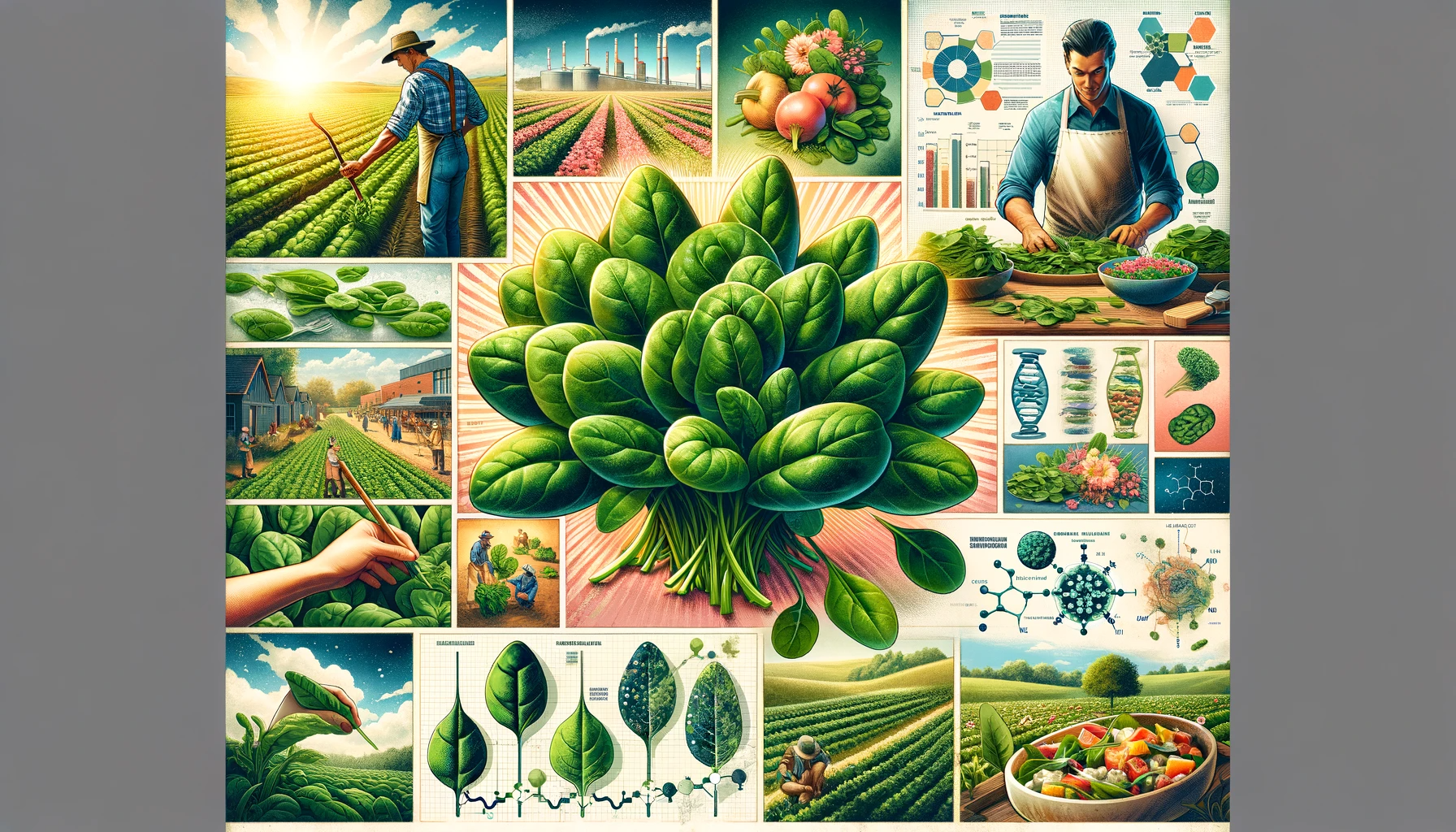Introduction
Fresh spinach is a versatile and nutritious leafy green that has gained popularity in recent years for its health benefits and culinary versatility. Whether you enjoy it in a salad, sautéed with garlic, or blended into a green smoothie, understanding the journey of spinach from the farm to your table can help you appreciate its freshness and quality. In this article, we will take a closer look at the key ingredients involved in the production and delivery of fresh spinach.
The Importance of Fresh Spinach
Before diving into the specifics of spinach production, it’s essential to highlight the significance of fresh spinach in a healthy diet. Spinach is packed with vitamins, minerals, and antioxidants, making it an excellent addition to any meal plan. It is a rich source of vitamins A, C, and K, as well as folate, iron, and fiber. Incorporating fresh spinach into your diet can promote overall health and well-being.
The Ingredients of Fresh Spinach
To truly understand the journey of fresh spinach, we need to break down the process into its key ingredients:
1. Spinach Seeds
The journey of fresh spinach begins with the planting of spinach seeds. These seeds are carefully selected to ensure high-quality spinach plants. The choice of seeds can impact the flavor, texture, and yield of the spinach.
– Selection of Spinach Varieties: There are various spinach varieties available, including savoy, flat-leaf, and semi-savoy. Each variety has unique characteristics, and farmers choose the one that best suits their growing conditions and market demand.
– Soil Preparation: Spinach thrives in well-drained, nutrient-rich soil. Farmers invest in soil preparation to provide the ideal growing environment for the spinach seeds.
2. Cultivation and Growth
Once the spinach seeds are sown, they require proper care and maintenance throughout their growth cycle.
– Watering: Adequate irrigation is crucial to ensure the spinach plants receive the right amount of moisture for optimal growth.
– Pest Control: Farmers monitor for pests and diseases that can affect spinach and employ organic or chemical methods to protect the crop.
– Harvest Timing: Timing is critical when harvesting spinach. The leaves should be tender and crisp, ensuring the best flavor and nutritional value.
3. Harvesting and Processing
After the spinach plants reach maturity, they are harvested and prepared for distribution to consumers.
– Hand Harvesting: In many cases, spinach is hand-harvested to prevent damage to the delicate leaves. Skilled farm workers carefully pick the leaves to ensure quality.
– Washing and Cleaning: Spinach goes through a thorough washing and cleaning process to remove dirt, debris, and any residual pesticides or fertilizers.
– Packaging: Fresh spinach is packaged in various ways, including bags, clamshells, or bulk bins, to preserve its freshness during transportation and storage.
4. Transportation and Distribution
The journey of fresh spinach continues as it is transported from the farm to distribution centers and ultimately to your local grocery store or market.
– Refrigeration: Spinach must be kept at the right temperature during transportation to maintain its freshness and nutritional value.
– Distribution Networks: A well-organized distribution network ensures that fresh spinach reaches consumers in a timely manner.
– Local Sourcing: Whenever possible, consider buying locally sourced spinach to reduce the carbon footprint associated with long-distance transportation.
Conclusion
Understanding the ingredients of fresh spinach, from the seeds planted in the soil to the careful harvesting and distribution, allows you to appreciate the journey this nutritious leafy green takes before it reaches your plate. By choosing fresh spinach and supporting sustainable farming practices, you can enjoy the numerous health benefits it offers while contributing to a more environmentally friendly food system. Make fresh spinach a regular part of your diet, and savor the taste of this farm-to-table delight.
